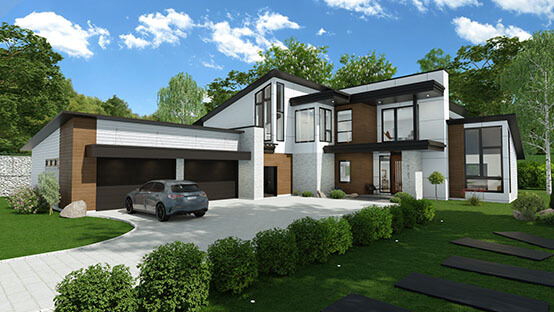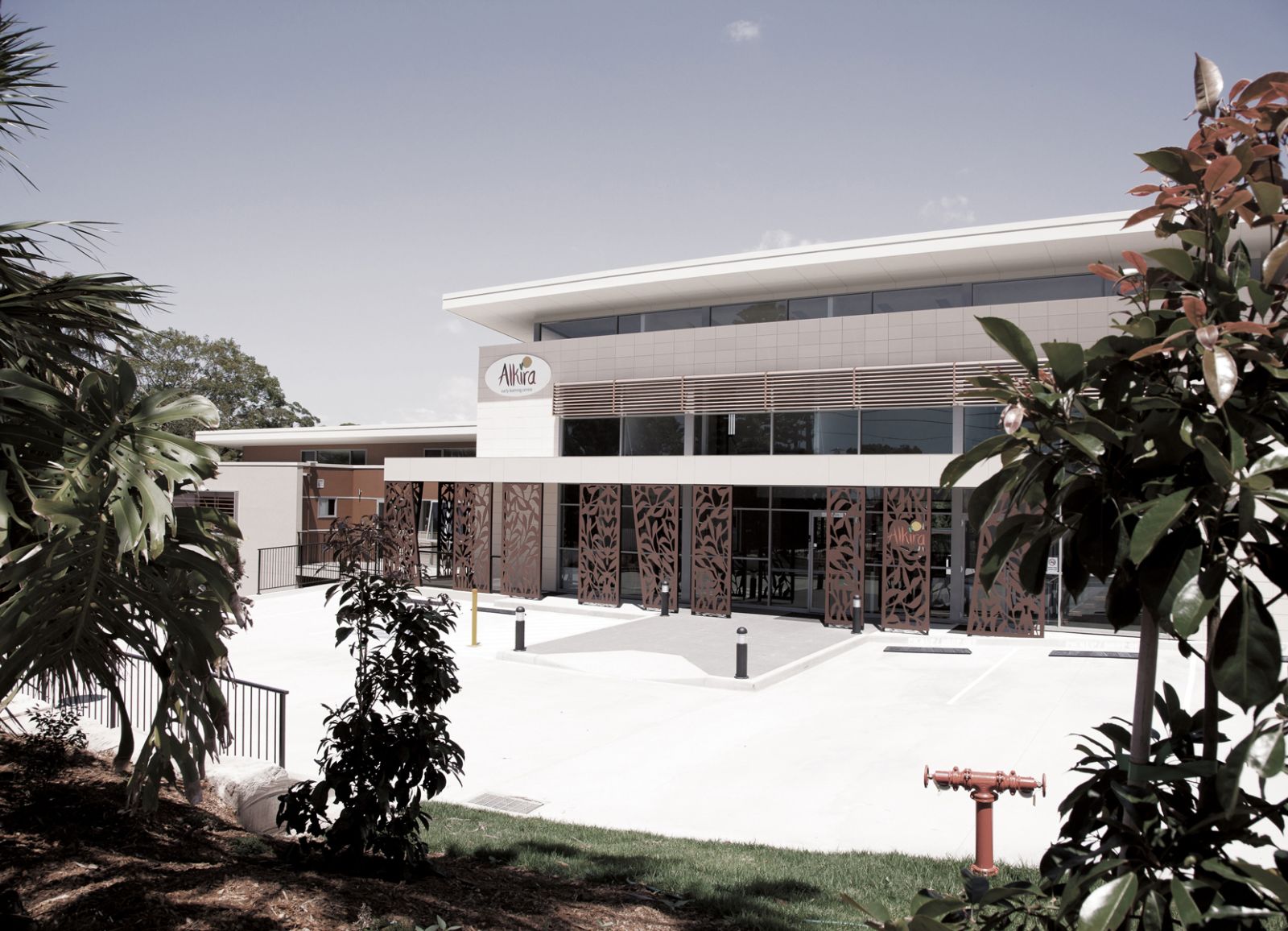Top Patterns in Residential Architecture You Must Understand About
As residential design proceeds to develop, numerous engaging trends are forming the way we create and occupy our living areas. Trick developments such as lasting building techniques, the combination of clever home innovation, and the rise of modular homes emphasize a considerable shift in the direction of both functionality and environmental responsibility. In addition, concepts like open plan living and biophilic style are redefining our interaction with area and nature. Recognizing these trends not just notifies layout choices but also reveals wider effects for way of living and area - residential house architect. What might these technologies mean for the future of domestic living?
Lasting Structure Practices
A raising variety of residential jobs are accepting lasting building practices, driven by an expanding understanding of ecological effect and energy effectiveness. This shift is characterized by the integration of environmentally friendly materials, energy-efficient styles, and ingenious building methods. Homeowners and building contractors are progressively focusing on making use of renewable energies, such as bamboo and recycled metals, which not just reduce the carbon impact however also boost the resilience and aesthetic allure of properties.
Incorporating energy-efficient systems is one more crucial aspect of sustainable building - residential house architect. Functions such as high-performance insulation, energy-efficient windows, and photovoltaic panels are ending up being standard in new household styles. These components not just add to lower power consumption but also give considerable long-term cost savings for property owners
Furthermore, the format of sustainable homes frequently highlights all-natural light and ventilation, lowering the reliance on synthetic lights and climate control systems. Landscape design practices, such as xeriscaping, further promote sustainability by reducing water usage.
As the demand for sustainable living solutions proceeds to rise, the residential design sector is poised to introduce and adjust, making certain that future homes are not just ecologically liable yet likewise comfortable and practical for their owners. - residential house architect
Smart Home Innovation
Smart home innovation is changing the way home owners connect with their living spaces, enhancing energy, safety, and ease monitoring. This ingenious technique incorporates various tools and systems, permitting individuals to regulate their homes from another location or with automated processes. Central to this fad is making use of clever devices such as thermostats, illumination, protection cams, and home appliances, all attached by means of the Web of Things (IoT)
Among one of the most attractive functions of smart home modern technology is the ability to personalize settings for optimal energy performance. Property owners can monitor power use and readjust air conditioning, home heating, and lighting based upon their regimens, substantially decreasing utility expenses. Advanced security systems equipped with smart locks and surveillance cameras offer peace of mind, enabling remote monitoring and signals to possible protection breaches.
Combination with voice-activated aides enhances user experience, permitting house owners to manage tools with straightforward voice commands. As modern technology remains to advance, the possibility for clever home systems to improve lifestyle expands, making them a vital factor to consider in modern-day household architecture. Eventually, clever home innovation is not just a trend however a fundamental shift toward extra smart living settings.
Open Idea Living
Open up principle living has arised as a defining feature in contemporary residential style, defined by the removal of standard obstacles between spaces. This style viewpoint advertises fluidness and connectivity within find more information the home, permitting for a seamless transition between locations such as the kitchen, dining, and living rooms. By getting rid of partitions and walls, open idea formats create a feeling of space, fostering an inviting ambience that boosts social communication.

Moreover, this strategy to household design lines up with minimalism, concentrating on useful simplicity and aesthetic coherence. House owners value the versatility of these layouts, which can be easily adapted to show personal style via furnishings plan and decoration. As open principle living remains to acquire grip, it continues to be a testament to developing household dynamics and the wish for homes that improve link and convenience.
Biophilic Style
Biophilic style has actually ended up being significantly substantial in household style, stressing the inherent link in between people and nature. This layout ideology seeks to incorporate all-natural aspects into living areas, consequently promoting a sense of well-being and enhancing the lifestyle for passengers. By integrating features such as all-natural light, greenery, and organic products, biophilic style original site promotes an unified relationship in between interior atmospheres and the natural world.
Crucial element of biophilic style include large windows that provide unhampered views of outdoor landscapes, living wall surfaces that present greenery into insides, and open floor plans that encourage air flow and natural light infiltration. Water features, both inside and outside the home, offer to produce soothing environments and improve sensory experiences.
Additionally, making use of lasting materials not only sustains environmental stewardship however also contributes to healthier interior air high quality. As recognition of environmental concerns rises, home owners are increasingly focusing on designs that show their link to nature. In significance, biophilic style not just boosts visual appeal however additionally addresses mental and psychological requirements, making it an essential trend in contemporary property style.
Modular and Prefab Homes

Additionally, prefab and modular homes are created with sustainability in mind. Numerous suppliers make browse around this web-site use of energy-efficient systems and environmentally friendly products, such as photovoltaic panels and advanced insulation strategies, adding to minimized energy consumption and reduced energy costs for property owners. The flexibility of design alternatives enables for personalization, satisfying diverse visual preferences and functional needs.
As the need for cost effective housing continues to increase, prefab and modular homes provide a viable remedy, attending to both economic and ecological challenges. Communities are significantly acknowledging the possibility of these structures, incorporating them into rural and city settings. Generally, the fad towards modular and prefab homes indicates a shift towards more sustainable, efficient, and versatile living environments, making them an essential facet of contemporary property style.
Conclusion
In verdict, the developing landscape of property style showcases significant trends that focus on sustainability, innovation, and wellness. Sustainable structure practices and smart home innovations improve performance and convenience, while open concept living and biophilic layout foster social communication and a link to nature. The surge of prefab and modular homes supplies personalized and inexpensive services, mirroring a more comprehensive change in the direction of practical and responsible living. These trends jointly highlight a commitment to creating ingenious and harmonious property atmospheres.
Trick advancements such as sustainable building methods, the integration of wise home technology, and the surge of modular homes highlight a substantial change towards both capability and environmental duty.The rise of prefab and modular homes has actually changed the domestic style landscape, providing cutting-edge services for reliable and sustainable living.In addition, modular and prefab homes are made with sustainability in mind. In general, the fad toward modular and prefab homes signifies a shift towards more sustainable, reliable, and versatile living environments, making them a critical aspect of modern residential design.
Lasting building methods and smart home innovations boost effectiveness and ease, while open concept living and biophilic style foster social communication and a link to nature.